Maximum sensitivity in the smallest possible package with H3D’s M400 custom integrable CZT module
21st September 2022
A comparative study by the IAEA at Seibersdorf presented the spectroscopic probe as the most accurate detector
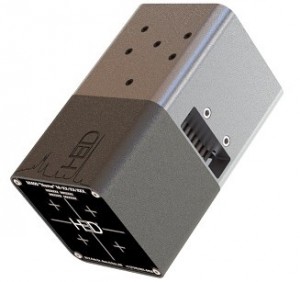
H3D’s new M400 CZT gamma spectroscopic probe has been designed to achieve maximum sensitivity in the smallest possible package. It has been compared by the IAEA with a LaBr3 scintillant detector at its laboratories in Seibersdorf, which clearly presented it as the most accurate detector.
In the study, the detectors measured four samples of uranium:
- depleted (0.225% U-235 enrichment)
- natural (0.71% U-235 enrichment)
- reactor grade (3.11% U-235 enrichment)
- enriched (19.8%)
Comparisons were also made to a HPGe detector, which had a much higher dead time than the M400 and LaBr3. This was due to it being optimized for energy resolution so measurements with reasonably high dead time were avoided for comparison purposes so as not to artificially inflate the M400’s performance, relative to it.
The M400 can be mounted on Unmanned Aerial Vehicles for remote area monitoring with radiation sources identified in real-time. This allows it to be used in a range of applications including Nuclear Power, Nuclear Waste, CBRNe, and Emergency Response.
Testing against reactor grade uranium and depleted uranium
In the first experiment, reactor grade uranium was shielded by 7mm of steel and measured at contact with all three devices. This highlighted the energy resolution of the M400 and HPGe detector relative to the LaBr3. It presented the M400 as having a superior energy resolution to the LaBr3, which is clearly shown by the much sharper peak. The experiment was completed again with depleted uranium, having a similar outcome.
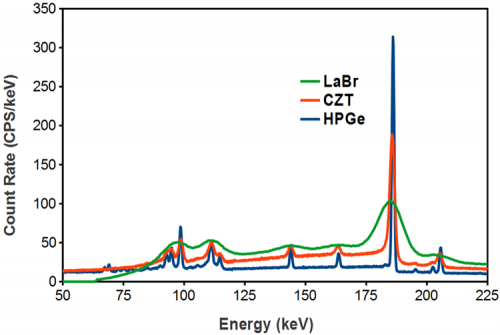
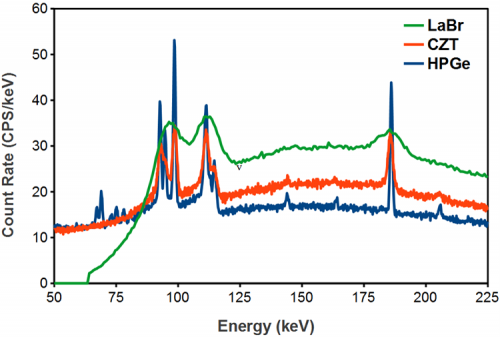
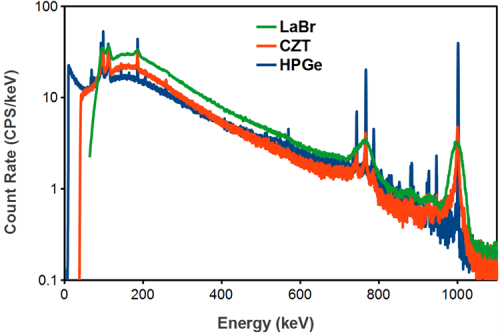
Testing against plutonium
In the next experiment, all three detectors were placed in contact with a cadmium shield over a Pu61 sample (see table below for composition). It was observed that the LaBr3 is not able to effectively capture the structure of the plutonium emissions. The M400 is much more effective than the scintillator, showing multiple peaks where the scintillator just shows a broad hump.
The HPGe is clearly superior to the M400 but whether this is an impediment to accurately grading the plutonium is a topic that is worthy of further investigation. This was repeated with a Pu93 sample (see table below for composition) and gave results that were essentially the same, with the LaBr3 providing a handful of broad humps, while the semiconductors provide many more distinct features.
| Name | Pu-238 | Pu-239 | Pu-240 | Pu-241 | Pu-242 | Am-241 |
| Pu93 | 0.0117% | 93.4392% | 6.2886% | 0.2215% | 0.0390% | 0.1039% |
| Pu61 | 1.2045% | 62.6562% | 25.3526% | 6.6376% | 4.1491% | 1.4362% |
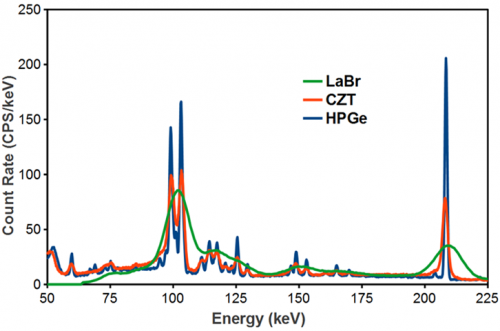
Testing the M400 against uranium
In another experiment, the spectrum only from the M400 was compared to different enrichments of uranium. A 19.8% enriched sample of uranium was included, in which case the count rate was quite high, and pileup was observed, however, there appeared to be minimal impact on the peak shape at that high count rate.
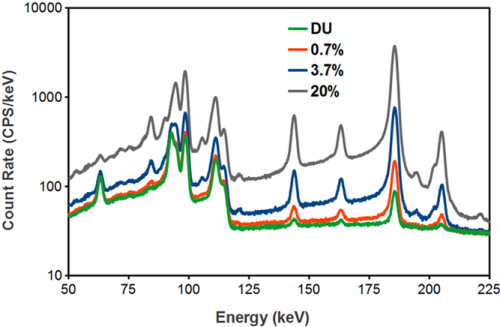
Testing CZT against steel shields
In a final experiment, the M400 was assessed against increasingly thick layers of steel, in an attempt to completely shield out the 186 keV peak. Even with 2.6 cm (1”) of steel, the 186 keV peak can still be seen, as shown in the graph.
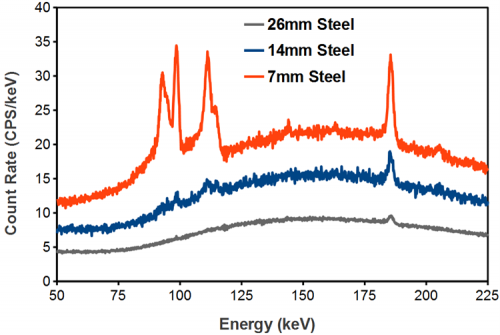
Find out more
You can learn more about the M400 CZT gamma spectroscopic probe and its detection capabilities by clicking the button below to request a guided demonstration with one of our product specialists.
You can read the full results of the IAEA’s study by clicking here.